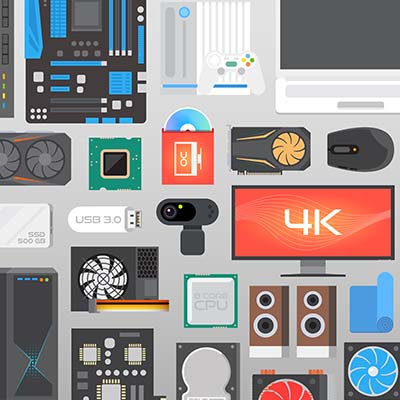Integrating New Hardware Doesn’t Have to Be Difficult
Here are some of the challenges that your business might face when implementing new hardware solutions.
Before getting too far, however, it’s helpful to have an idea of what not to do when replacing your technology. Many businesses will fall into the category of break-fix, meaning that they only replace technology when it has already broken down, often beyond repair entirely. Imagine the downtime that this practice can cause for businesses and the amount of money wasted on it. It’s a serious problem.
To illustrate this severity, consider a server unit that might fail before you replace it. How is everyone accessing the data found on this server? If your workstation breaks down, that’s one thing, but if the device used for business-wide data transmission breaks down, your entire business could be stuck in the mud until the issue is resolved. Meanwhile, you are wasting both time and money figuring out how to resolve the issue when preventative maintenance could have prevented all of this.
First, you must ask yourself, “Should I consider new hardware in the first place?” Sometimes you might upgrade even if you don’t need to, simply because there is a more up-to-date model for a particular device that you have your eye on. Chances are that there is no need to upgrade immediately, especially if your current systems work perfectly fine. You should only consider upgrading away from your current systems when your technology is either causing disruptions to operations or if failing to upgrade will cause problems for you in the near future.
The second question you must ask is “What will I use this hardware for?” For example, if you try giving your video editor a thin unit or a standard office workstation, they are not going to have a good time going about their day-to-day tasks–tasks which are graphic-intensive and require more powerful machines. The idea here is to know what the technology is going to be used for before you implement it. Having unrealistic expectations for how your employees will use the technology is not going to help anyone.
Finally, you must also ask, “What is the timeline for replacing this hardware?” Remember that it is incredibly important to have a technology roadmap that lays out the timeline for when and how you should implement new hardware and other technology solutions for your business. This might include regular hardware refreshes to avoid the risks of hardware failure. At first glance, it might seem like you are replacing technology prematurely, but the difference here is that these are planned occurrences rather than purchases that come out of necessity.
Ultimately, the best way to implement new hardware solutions is to work with a professional like one of our trusted technicians. We can help you stay on the right path when implementing new technology. To learn more, reach out to us.



